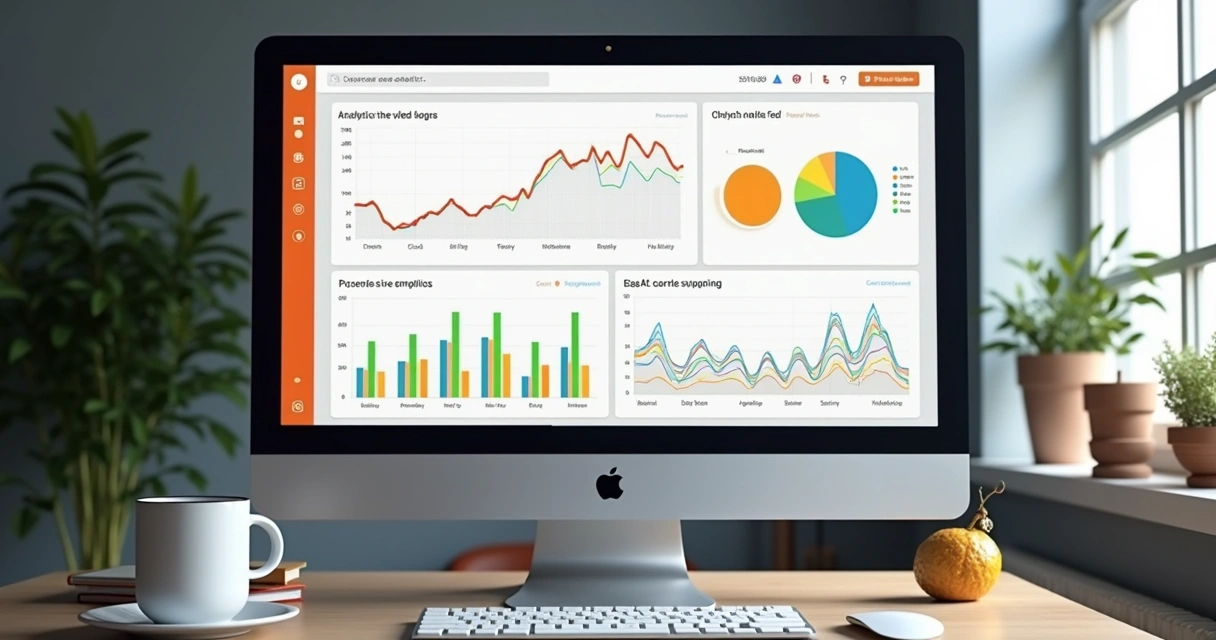The journey to building a successful SaaS business often starts with a single, burning question: Can this idea become something people want and use? Before pouring months (or even years) of work and resources into coding the finished product, founders in 2025 must find faster, smarter ways to answer this question. That’s where the MVP, the minimum viable product, steps in as a trusted, practical companion for many startups.
But “minimum” and “viable” can be relative. What counts as “good enough” to launch, and how do you make choices that actually save you time and money rather than send you down the wrong road?
This guide will walk through what a SaaS MVP really means for the modern startup, the key steps to turning a concept into something users can try, and the evolving toolkit available, from time-honored custom builds to no-code and low-code solutions. It’s meant for founders, product leads, and even curious team members eager to understand how SaaS MVP development can help (or sometimes hinder) a company’s early momentum in 2025.
Build fast, learn early, and adapt, that’s the real MVP advantage.
What exactly is a saas mvp?
In the SaaS world, an MVP is the most basic version of your product that can be released to users. It does just enough to solve the core problem and lets real customers give feedback.
Think of it as your startup’s experiment. Instead of putting everything (and the kitchen sink) into the first build, you make a working, sometimes rough draft. This version tests your main concept, finds out who will actually pay for it, and tells you what features people really care about.
- Minimum: Not the bare minimum, but a product with just the features necessary to test a key assumption or offer core value. Anything extra can wait.
- Viable: It has to work, at least for its main use case. A “demo” or “mockup” does not count at this stage.
- Product: Users interact with it. They sign up, try it out, hopefully get some value from it, and, ideally, share honest opinions.
The MVP lets you see your SaaS dream in action, but without betting your entire budget on the first try.
Why a mvp matters for SaaS startups
There’s pressure to launch quickly and beat the competition. At the same time, money is always tight, and no founder wants to waste months building something nobody needs. An MVP can soothe those headaches (at least a little).
- Speed: You learn faster what works (or what doesn’t) in the real world.
- Cost savings: Fewer features means fewer hours of coding and testing. That often equals lower startup costs.
- Fewer regrets: If you discover the core problem isn’t actually important to users, pivoting is easier with less sunk cost.
- Focus: Teams rally around a simple goal: solving the main user need, not a laundry list of “nice to have” features.
It’s better to launch a simple thing people want, than a masterpiece nobody needs.
Saas mvp development: mapping the process
A successful SaaS MVP doesn’t happen by accident. It’s not just about building less, it’s about learning more, faster. Let’s map out the broad stages from idea to first users:
- Validate the idea
- Research your market
- Collect user feedback (early)
- Decide on tech, platform, and “stack”
- Prioritize features realistically
- Build, using traditional, no-code, or low-code tech
- Test, iterate, and test again
- Gather metrics, learn, and improve
It can feel like a loop rather than a straight line. Sometimes, a test fails and you have to step back a stage or two. Sometimes feedback pushes you ahead faster than expected.
Validating your SaaS idea: don’t skip this
It’s tempting to move right into building. But what if your problem isn’t a problem? Spending time here saves future pain.
Ways to validate:
- Talk to real potential users (not just friends or family).
- Send short surveys to your target group.
- Build a landing page that “sells” the idea, then see who signs up.
- Offer a simple prototype or clickable mockup to get fast reactions.
If you build it, will they come? Find out before you build.
Sometimes, hearing “no” early is a gift. Other times, a lukewarm response means an adjustment (or a twist in your concept) is needed. Not every exciting idea is needed by the market, and that’s okay.
Market research for SaaS MVPs
Good ideas need context. Who else is already solving this problem? What makes your approach a better fit for specific users? Research at this stage helps find the gap your product could fill.
Try these steps:
- Look for forums where your target users hang out. What do they complain about?
- Check for existing tools solving similar problems. What do their reviews say is missing?
- Estimate the market size. Are there enough potential customers to make this worth your time?
- Identify your early “believers”, those most likely to try new software.
Market research is more than finding competitors. It’s finding honest answers about what users value and what they would pay for.
 Collecting early feedback: listening before launching
Collecting early feedback: listening before launching
Early feedback can be uncomfortable, but it’s a shortcut to progress. Instead of guessing, you learn straight from people who might one day pay for your tool.
- User interviews: Short, honest conversations can highlight real pain points or reveal what’s just a mild inconvenience.
- Pretotype tests: Share clickable demos or basic mockups. Let people “use” the idea before it exists. Watch where they hesitate or lose interest.
- Pre-launch signups: See how many people are willing to share their email for updates. It’s a measure of real curiosity.
You can’t guess your way to product-market fit.
If you don’t hear excitement or see users coming back for more details, that’s a sign. Perhaps the value isn’t clear, or, you’re just too early. Adjust, clarify, and ask again.
Choosing the right technology and building blocks
Your choice of tech can make (or break) your timeline and budget. Options seem endless in 2025, but picking the right stack is still about matching your vision to what you can realistically launch (and maintain).
- Web-based or native app? Web apps are faster to launch and update, while native apps (iOS or Android) could be needed for some markets.
- No-code and low-code platforms: These can get a prototype live within days or weeks. Some even support scaling up if the idea sticks.
- Custom code: Developers can build anything, but speed and budgets take a hit. If you have complex logic or must integrate with tricky APIs, this might be the way.
 There isn’t a single right answer. Sometimes a smart blend, say, using a no-code platform for user sign-in and a touch of custom code where needed, is the best path.
There isn’t a single right answer. Sometimes a smart blend, say, using a no-code platform for user sign-in and a touch of custom code where needed, is the best path.
Feature prioritization: less is more
It’s easy (and comforting) to picture your dream SaaS with every bell and whistle. Real progress, though, means saying “not now” to almost everything but the basics.
- Identify the core user story: if you had to pitch value in one sentence, what is it?
- List all possible features, then ruthlessly rank them by user impact and effort to build.
- Challenge anything not tied directly to your main promise. If a feature won’t be missed in the first few weeks, save it for later.
- Use the Moscow method: Must have, Should have, Could have, and Won’t have (for now). Focus on the “musts”.
Every feature you add to your MVP should have a reason. Otherwise, it’s a distraction.
And when in doubt, ask potential users. They’ll help you spot what belongs, and what can wait.
Comparing traditional, no-code, and low-code approaches
Building an MVP in 2025 isn’t like building one a decade ago. The toolkit has grown, giving founders the power to be picky with how they spend time and money. Each approach, though, comes with its benefits and drawbacks.
Traditional (custom code)
- Pros: Total flexibility. Integrate with any API, create custom backend logic, perfect your UX.
- Challenges: Takes longer. Needs experienced developers. Bugs can sneak in, and costs are higher.
- When to choose: Your solution is unique, or you want to own every aspect of the architecture.
 No-code platforms
No-code platforms
- Pros: Fast to launch. Costs are lower. Founders without coding skills can build and test their ideas nearly solo.
- Challenges: Limited customization. Some integrations are tough, scaling can hit walls if your app grows quickly.
- When to choose: Your MVP is straightforward, and you want to see if your idea sticks without heavy investment.
Low-code tools
- Pros: Faster than custom code. Lets you add some custom business logic for unique needs.
- Challenges: Can be pricier than pure no-code. Sometimes feels like a compromise between easy and powerful.
- When to choose: You need something more sophisticated than no-code offers, but don’t want the full cost and delay of custom code.
Making the right choice depends on your team skills, the audience you plan to attract, and honestly, your appetite for tinkering. Many successful SaaS MVPs in 2025 will start on no-code or low-code platforms, then switch to custom code once traction is proven.
Your MVP isn’t forever. You’re building to learn, not building to last (yet).
Developing your SaaS MVP: step by step
With the right goal, tools, and features defined, it’s time to get building. Here’s a practical breakdown, but keep in mind, sometimes steps overlap, and surprises happen.
- Sketch the main flow: Use pen and paper, a whiteboard, or digital wireframing tools. Map the key steps a user will take.
- Design for simplicity: Your interface should be easy to understand. Focus on usability, not visual perfection.
- Set up the backend: Whether you’re using a no-code database or coding it yourself, make sure you can store users, data, and any necessary logic.
- Build the frontend: Start with your landing page and sign-up flow. Then add your core “action”, what value are you promising?
- Connect it all: Set up integrations, payment processing (if needed), and analytics.
- Test with real users: Even if it’s just three or five, get people trying it out. Watch and learn.
- Iterate (repeat as needed): Make quick fixes based on user feedback, then release again.
 Balancing technical debt and speed
Balancing technical debt and speed
Rushing to launch often means creating a little technical debt, code that will need cleaning up later. That’s fine, as long as you’re aware. Make notes of shortcuts, comment your code, and promise yourself (and your team) to refactor once you see traction.
Best practices for rapid iteration and testing
Quick, small releases are the recipe for learning in the MVP stage. Don’t wait for the perfect version. Your first users won’t expect polish, they want progress.
Ship early, ship often, and let users help you find the path.
Best practices include:
- Shorten feedback loops: Build, release, collect feedback, repeat. Aim for weekly (or even daily) improvements.
- Automate basic tests: Catch easy bugs, free up time for user-facing tweaks.
- Track what’s getting used (and ignored): Analytics reveal which features matter. Don’t guess, measure.
- Talk to users constantly: Watch them use the product, ask about sticky points, and listen for ideas.
- Be comfortable with “ugly” fixes at first: Design can always be improved. First, make sure people want what you’re building.
 Iterating quickly means you get more shots on goal. Sometimes, a feature you thought was just “nice to have” becomes the main event, and vice versa.
Iterating quickly means you get more shots on goal. Sometimes, a feature you thought was just “nice to have” becomes the main event, and vice versa.
How to pick the right development partners or platforms
Not every founder can code, and not every team is ready to build from scratch. Choosing who helps (or what platform powers your MVP) can have a huge impact on speed and budget.
- Look for real experience: Whether hiring freelancers, agencies, or joining forces with other founders, find people who have built SaaS MVPs before.
- Prioritize communication: The best partnerships work when feedback is welcomed, changes are discussed openly, and nobody gets defensive.
- Check for flexibility: Your MVP will change. Whoever you work with should handle updates and shifting priorities with a positive attitude.
- Choose tools you can maintain: Fancy tech is fun… until nobody on your team can update it. Pick platforms or frameworks with clear documentation.
Your first partners set the pace. Choose those who share your goals and can roll with early-stage chaos.
Questions to ask before committing
- Can this team/platform build and launch a working MVP in 2-8 weeks?
- Are past MVPs still running, or were they too hard to support?
- Do we have access to our own code and data?
- Is technical support available if things break or need quick fixes?
Sometimes founders try to do it all solo. That works, but only up to a point. Having the right backup, even if it’s just another set of eyes on your prototype, speeds up your learning.
Tracking the right metrics for ongoing improvement
Launching your MVP is just the first step. True learning comes from measuring what users actually do, not what they say they’ll do.
Core metrics worth tracking:
- Signups and activations: How many people create accounts? How many stick around after their first visit?
- DAU/WAU/MAU: Daily, weekly, and monthly active users. Shows repeat engagement.
- Core action conversion: How many users use your main feature?
- Churn rate: How many people stop using your product after the first week or month?
- User feedback: Collect both qualitative (comments, support requests) and quantitative (ratings, surveys) data.
You can only improve what you measure.
Don’t get lost in measuring everything. Start with what matters: are users finding value, and what’s stopping them from coming back?
 Using insights to drive the next iteration
Using insights to drive the next iteration
Once you have numbers (and user stories) coming in, the job shifts to improvement. Kill the features nobody uses. Streamline workflows that leave users confused. And be ready to go back to the drawing board for big elements if that’s what the data suggests.
Some founders struggle to let go of original ideas. But the best MVP process is almost ruthless: improve, cut, or change anything that gets in the way of real value.
Scalability: building with the future in mind
You don’t need to build for millions of users at the start. Still, nobody wants to re-do everything once the MVP finds traction.
- Choose tools that let you upgrade (add servers, scale databases) if you hit a growth spurt.
- Document your tech stack and any hacks or quick fixes made during MVP stage.
- Pick a UI design that can “grow up” with your product, even if it’s plain for launch.
Today’s MVP could be tomorrow’s foundation. Build with just enough future-proofing in mind.
Of course, guessing at future needs is tough. Keep things modular and avoid tying yourself to a tool you know you’ll outgrow too quickly.
 When and how to make the leap to a full product launch
When and how to make the leap to a full product launch
The goal is not to stay in MVP mode forever. At some point, you’ll see repeated use, positive feedback, or even enough revenue to justify ramping up.
- Wait until you have clear evidence of genuine demand, not just polite interest, but monetary or time investment from your users.
- Line up early customers willing to provide testimonials, reviews, or case studies.
- Prepare for a real upgrade: better servers, more customer support, proper onboarding flows.
Sometimes, tiny tweaks are enough. Other times, a total rebuild is needed. Listening to your “power users” can show where the pain points are, or what features are now must-haves.
Focusing on core features and agile methods
Core features make up the heart of an MVP. Too much complexity too soon slows learning and stretches budgets thin. Instead, take a page from agile practice: release, review, revise. Stick to what makes your SaaS unique.
- Use user stories: “As a [type of user], I want to [accomplish a goal], so I can [see value].” This keeps features focused.
- Set—and stick to—short release cycles. Two weeks is often better than two months.
- Hold retrospectives, even if it’s just the founding team. What went right, what slowed us down?
Agile approaches are less about ceremonies and more about feedback and speed. Failing fast means winning sooner, or at least, losing less expensively.
Ship small, ship smart, learn everything you can.
 Watch out for common mistakes in SaaS MVP development
Watch out for common mistakes in SaaS MVP development
- Overbuilding: Adding features “just in case” slows down learning. Keep to your core promise.
- Siloed work: Teams that don’t share progress or missed feedback loops risk drifting away from user needs.
- Ignoring feedback: There’s no point collecting user pain points if you never act on them.
- Delayed launch: Waiting for perfection means someone else could launch first, or the problem could change.
- Poor communication: Incomplete hand-offs (with developers, designers, or partners) often cause costly rework.
If your MVP fails to find traction, that’s okay. The point is to learn with low risk. Reassess and adjust, or sometimes… move on to the next idea. The best founders see MVPs as experiments, not bets-the-house projects.
In SaaS, failing fast is almost always safer than failing slow.
Should you skip the MVP and go straight to full build?
Occasionally, a founder just knows that a product must launch “fully formed.” Maybe the market is wired that way, or the stakes are especially high. For most, though, skipping the MVP phase is a riskier (and much pricier) path.
- Building for months or years raises opportunity costs if the idea flops.
- Early users enjoy being part of a work-in-progress. Their investment grows as features evolve.
- Markets shift. By the time you launch “perfect,” user needs may have changed.
It’s rare that the MVP approach does harm. Often, the lessons learned at this stage shape the entire journey of the startup, for the better.
The future of saas mvp development: looking to 2025 and beyond
Modern SaaS MVPs will be built even faster in 2025. With AI-assisted design, plug-and-play integrations, and hosted platforms ready to handle traffic spikes, founders can focus more on solving user problems and less on technical setup.
- Expect more hybrid MVPs, part no-code, part custom modules.
- Prototyping tools will let non-technical founders run complex experiments without writing code.
- User feedback channels will get richer, from video walkthroughs to in-app surveys that connect direct user sentiment to analytics dashboards.
But the old truths stick: Start with a problem worth solving, aim for “good enough,” and ship before you’re comfortable. Let your users lead you. And, when the signals align, scale up with the confidence that only real-world proof can offer.
Conclusion
SaaS MVP development in 2025 offers opportunity, and a few potholes, for every founder daring to turn a spark of an idea into a real product. Build just enough, learn really fast, and let customers become co-creators. Whether you’re taking your first steps or helping another founder map their route, keep these truths in mind.
Build for learning, not for luck.
The SaaS landscape keeps changing, but the logic of minimum viable products has never been clearer. It’s the best way to avoid waste, find direction, and make software people genuinely want. Step lightly, listen deeply, and the rest, well, that’s all part of the adventure.
Frequently asked questions
What is an MVP in SaaS development?
An MVP (minimum viable product) for SaaS is the simplest working version of your software. It includes only the core features needed to solve the main problem for users. The point is to test your main value proposition with real users, gather data, and improve based on feedback. This stops you from spending months building features people may not want.
How to build a SaaS MVP quickly?
To build a SaaS MVP fast, start by defining the single main problem you solve. Select just the must-have features. Use no-code or low-code tools if possible, as they allow you to launch quickly with less coding. Share early versions with real users and improve the product based on their feedback. Keep the team small and communication direct to avoid delays.
Is SaaS MVP development expensive?
It can be affordable if you focus on the essentials. Using no-code or low-code tools lowers costs, as does limiting features. Hiring experienced freelance developers for only key modules can also help. Costs rise when you add more complexity, need custom development, or delay feedback cycles. Start with a small investment and only scale as user demand grows.
Where to find the best MVP developers?
The best MVP developers often have proven experience building SaaS applications, not just any software. Look for developers or teams who communicate well, deliver fast, and are comfortable with changing requirements. You can find them via tech networks, developer platforms, or even by seeking referrals from other SaaS founders. Always review their past work and ask about their process for rapid MVP launches.
What are the key features for a SaaS MVP?
A SaaS MVP should focus on these essentials: user registration/sign-in, the main solution feature (the reason users try your product), and a simple dashboard or interface to access it. You may add basic analytics to track usage and a feedback mechanism. Anything beyond what’s needed to prove your product’s value can wait until after launch.





